
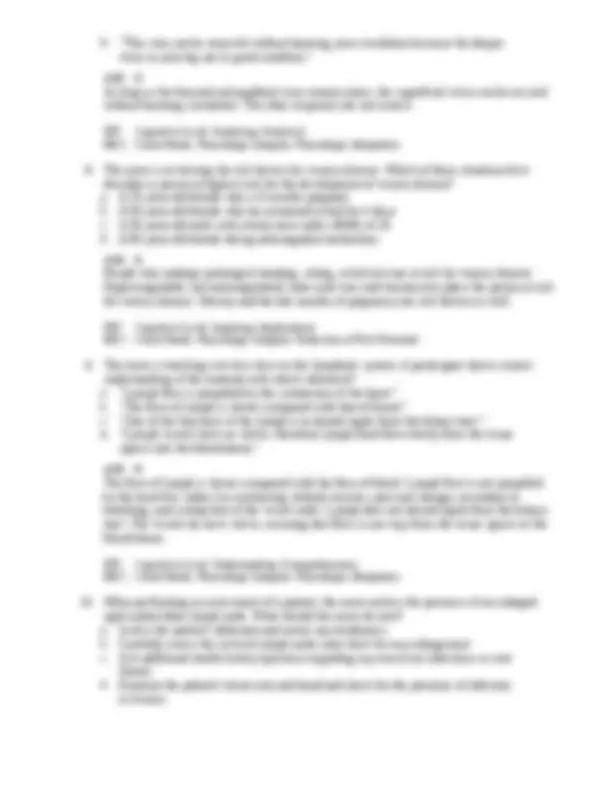
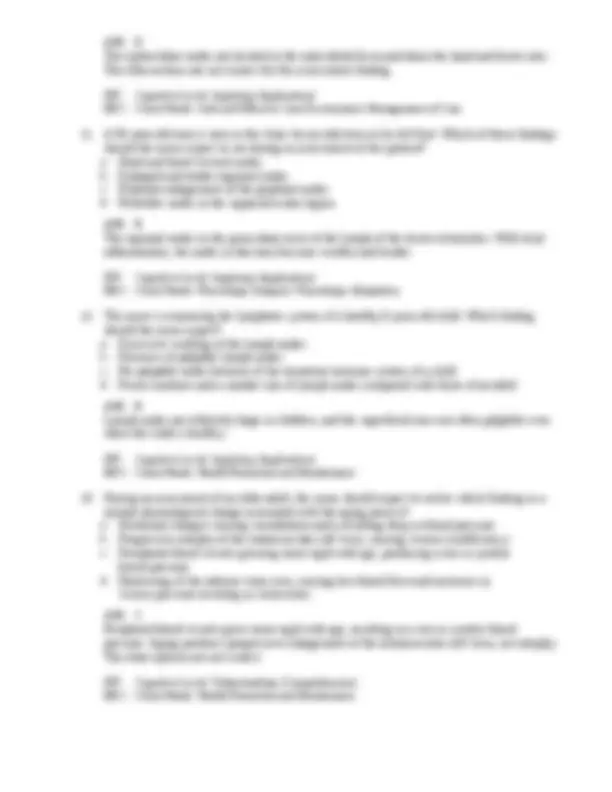
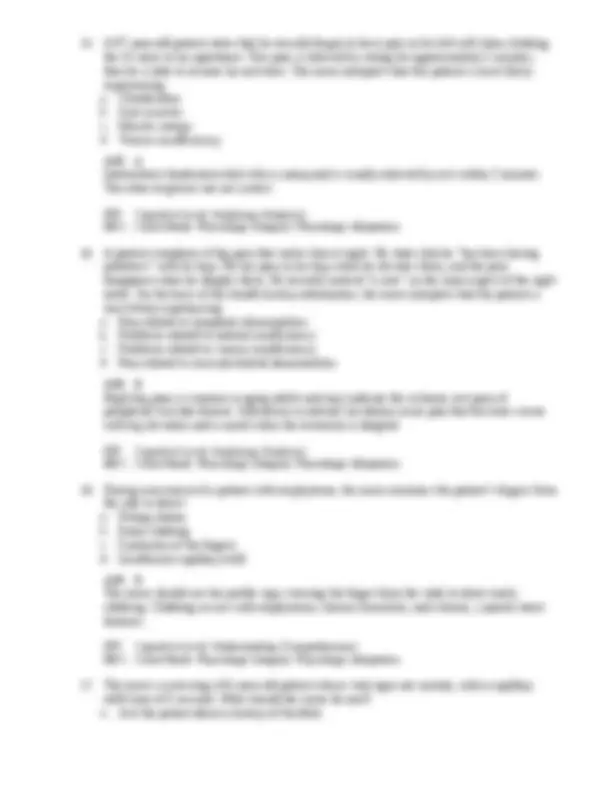
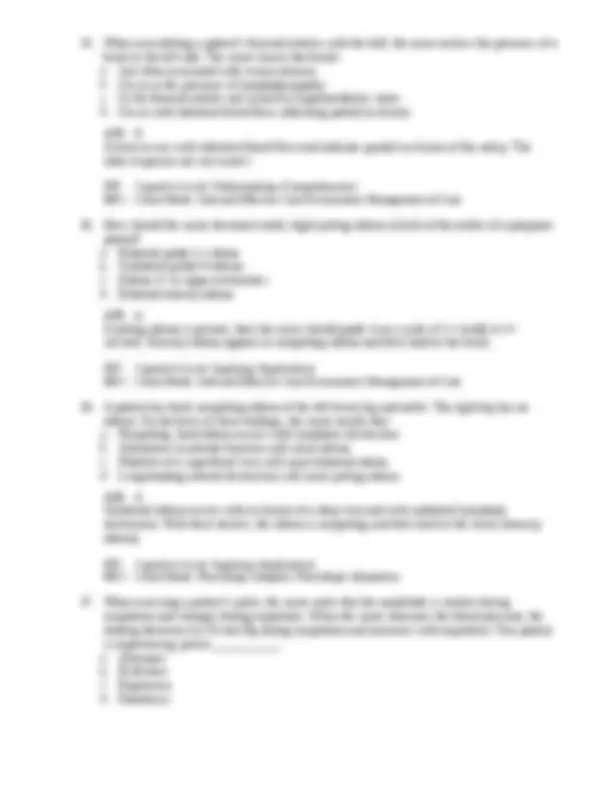
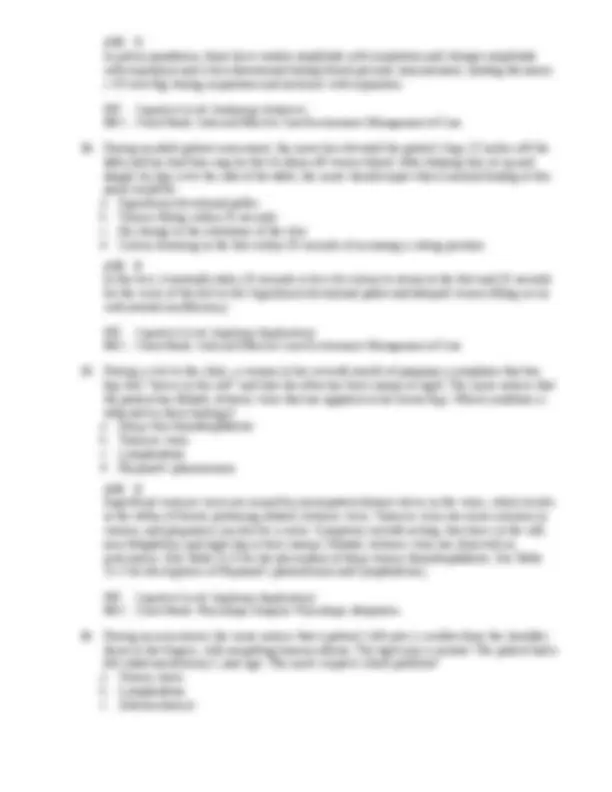
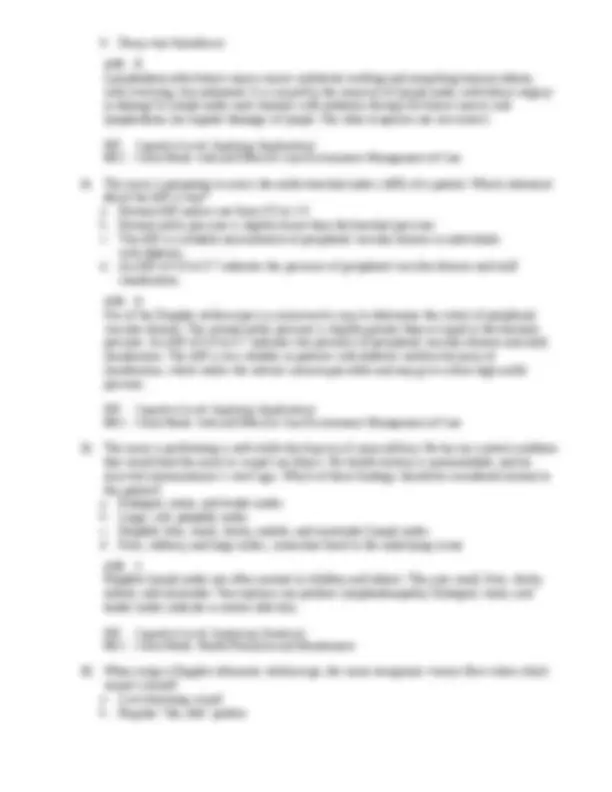



Study with the several resources on Docsity

Earn points by helping other students or get them with a premium plan


Prepare for your exams
Study with the several resources on Docsity

Earn points to download
Earn points by helping other students or get them with a premium plan
Community
Ask the community for help and clear up your study doubts
Discover the best universities in your country according to Docsity users
Free resources
Download our free guides on studying techniques, anxiety management strategies, and thesis advice from Docsity tutors
Peripheral Vascular System and Lymphatic System
Typology: Exams
1 / 13

This page cannot be seen from the preview
Don't miss anything!








DIF: Cognitive Level: Understanding (Comprehension) MSC: Client Needs: General
DIF: Cognitive Level: Remembering (Knowledge) MSC: Client Needs: General
DIF: Cognitive Level: Understanding (Comprehension) MSC: Client Needs: General
DIF: Cognitive Level: Analyzing (Analysis) MSC: Client Needs: Physiologic Integrity: Physiologic Adaptation
DIF: Cognitive Level: Understanding (Comprehension) MSC: Client Needs: General
DIF: Cognitive Level: Remembering (Knowledge) MSC: Client Needs: General
DIF: Cognitive Level: Applying (Application) MSC: Client Needs: Safe and Effective Care Environment: Management of Care
DIF: Cognitive Level: Applying (Application) MSC: Client Needs: Physiologic Integrity: Physiologic Adaptation
DIF: Cognitive Level: Applying (Application) MSC: Client Needs: Health Promotion and Maintenance
DIF: Cognitive Level: Understanding (Comprehension) MSC: Client Needs: Health Promotion and Maintenance
DIF: Cognitive Level: Analyzing (Analysis) MSC: Client Needs: Physiologic Integrity: Physiologic Adaptation
DIF: Cognitive Level: Analyzing (Analysis) MSC: Client Needs: Physiologic Integrity: Physiologic Adaptation
DIF: Cognitive Level: Understanding (Comprehension) MSC: Client Needs: Physiologic Integrity: Physiologic Adaptation
DIF: Cognitive Level: Understanding (Comprehension) MSC: Client Needs: Physiologic Integrity: Physiologic Adaptation
DIF: Cognitive Level: Understanding (Comprehension) MSC: Client Needs: Physiologic Integrity: Physiologic Adaptation
DIF: Cognitive Level: Applying (Application) MSC: Client Needs: Physiologic Integrity: Physiologic Adaptation
DIF: Cognitive Level: Applying (Application) MSC: Client Needs: Safe and Effective Care Environment: Management of Care
DIF: Cognitive Level: Understanding (Comprehension) MSC: Client Needs: Safe and Effective Care Environment: Management of Care
DIF: Cognitive Level: Applying (Application) MSC: Client Needs: Safe and Effective Care Environment: Management of Care
DIF: Cognitive Level: Applying (Application) MSC: Client Needs: Physiologic Integrity: Physiologic Adaptation
DIF: Cognitive Level: Applying (Application) MSC: Client Needs: Safe and Effective Care Environment: Management of Care
DIF: Cognitive Level: Applying (Application) MSC: Client Needs: Safe and Effective Care Environment: Management of Care
DIF: Cognitive Level: Analyzing (Analysis) MSC: Client Needs: Health Promotion and Maintenance
DIF: Cognitive Level: Understanding (Comprehension) MSC: Client Needs: Safe and Effective Care Environment: Management of Care
DIF: Cognitive Level: Understanding (Comprehension) MSC: Client Needs: Safe and Effective Care Environment: Management of Care
DIF: Cognitive Level: Analyzing (Analysis) MSC: Client Needs: Physiologic Integrity: Physiologic Adaptation
DIF: Cognitive Level: Analyzing (Analysis) MSC: Client Needs: Physiologic Integrity: Reduction of Risk Potential